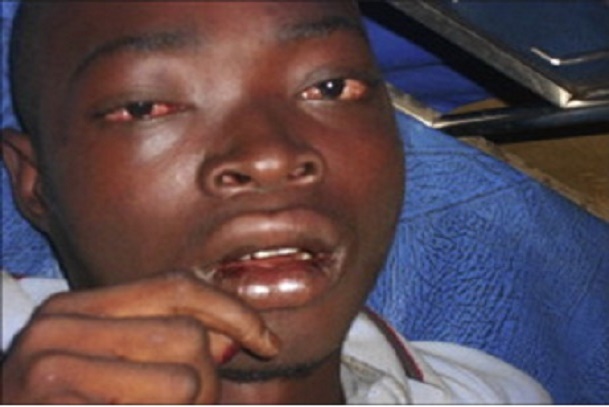 Wash your hands regularly and wear a face mask.
Learn more
Wash your hands regularly and wear a face mask.
Learn more

SIGNS AND SYMPTOMS
The incubation period for the Lassa virus is usually between 6-21 days. In the beginning, when the disease is symptomatic, it is mostly gradual, starting with general body weakness, malaise, and fever. After some days, wild symptoms set in; patients begin to experience headaches, sore throat, vomiting, nausea, muscle pain, chest pain, cough, diarrhea and abdominal pain. In severe cases, patients may experience facial swelling, bleeding from the nose, mouth, gastrointestinal tract or vagina, low blood pressure and fluid in lung cavity.
A urinary test may also reveal the presence of protein, while seizures, shock, disorientation, and coma may arise in later stages of the infection. 25% of infected patients who manage to survive the disease experience deafness. In half of these cases, hearing functions are restored in 1-3 months. The recovery process may bring about gait disturbance and transient hair loss.
Death occurs in fatal cases after 14 days of infection. The Lassa disease is mostly fatal in the later stages of pregnancy with fetal loss and/or maternal death occurring in more than 80% that occurred during the third trimester
ILLUSTRATIVE CASE: F. O. A student of Ambrose Alli University was spending holidays in Lagos when he reported to a private clinic with fever and body pains. He was treated for Malaria with Lonart and Panadol. He continued to have fever even after the treatment for 3 days. He noticed that he had bleeding gum when his tooth brush was stained with blood. He was therefore referred to the Teaching Hospital where Lassa fever was suspected and admitted to isolation ward. Blood test confirmed Lassa fever. He was treated and effort was made to trace all his contacts for screening.
COMMENTS. Lassa fever was suspected in this patient because he came from endemic area and had bleeding gum. Lassa fever should always be suspected in any person from endemic area who has fever and evidence of bleeding.
CHALLENGES IN EARLY DETECTION
One significant challenge in West African countries like Nigeria is differentiating between the early symptoms of Lassa fever and similar clinical presentations, which include yellow fever, malaria, Ebola, influenza, etc. The limited number of laboratory facilities and reagents make this an even harder task. Often times, malaria treatments and/or antibiotics are tried, and Lassa fever is only mentioned when these drugs and therapy have failed. This diagnostic delay, in turn, slows down the process of patient isolation, which increases the chances of transmission to family members and healthcare workers. Also, Ribavirin administration is equally delayed, reducing the overall effectiveness of the process of combating the virus.
Lassa fever should therefore be kept in mind when dealing with a having symptoms resembling malaria and should be strongly if the malaria is not responding to treatment or if there are signs of bleeding gums, nose bleed or bleeding from vagina.
Sources: These information were taken from various sources including World Health Organization (WHO)
How is Lassa fever Transmitted and who are those at risk of being infected? This will be explained in the next article